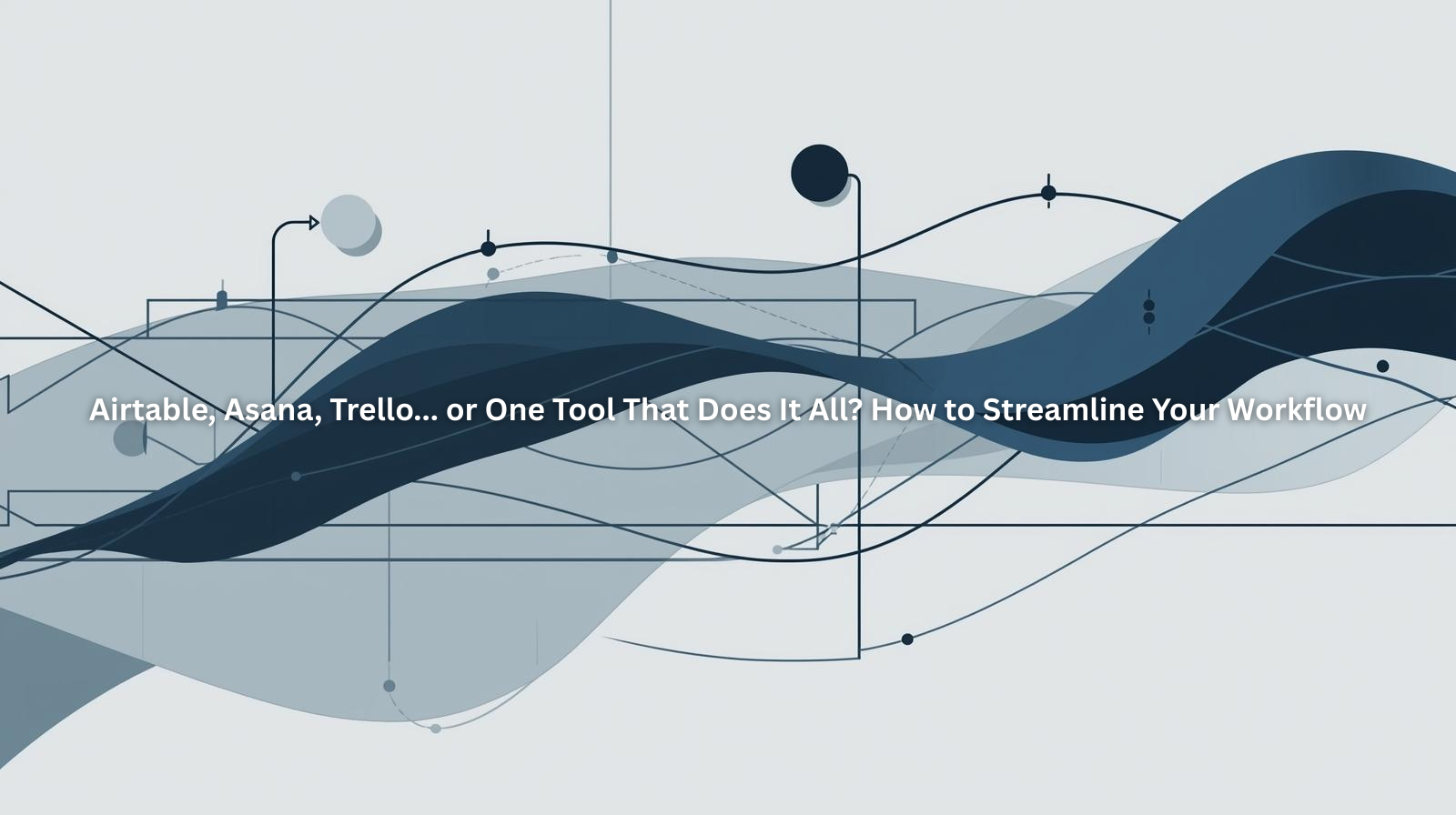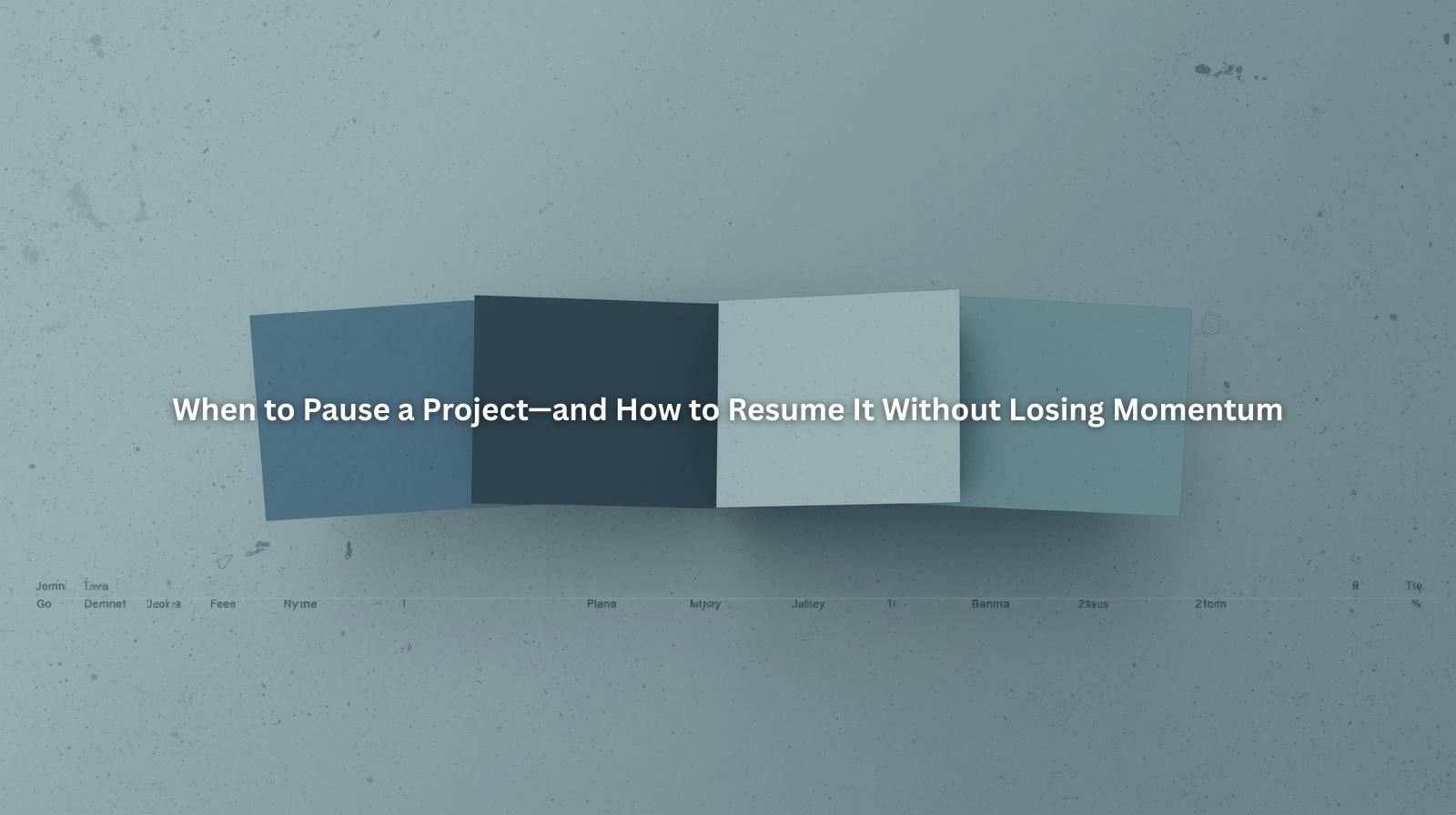From Reactive to Proactive: How to Regain Control of Your Project Pipeline

Table of Contents
- The Problem with Living in “Reaction Mode”
- What a Project Pipeline Actually Is (And Why You Need One)
- Signs Your Project Pipeline Is Managing You
- The Shift: Thinking Like a Creative Project Manager
- How to Build a Proactive Pipeline (Step by Step)
- How ProjectBook.co Supports Proactive Freelancers
- FAQ: Freelance Project Pipeline Clarity
1. The Problem with Living in “Reaction Mode”
You wake up, open your inbox, and immediately feel behind. One client needs an urgent revision. Another is waiting for a proposal you forgot to write. A third just asked if you’re available to start their project next week—and you haven’t even finished breakfast. You start responding, jumping from task to task, and by the end of the day, you’re exhausted without feeling accomplished. That’s reaction mode—and it’s where many freelancers unknowingly live most of the time.
It’s not that you’re doing something wrong. Freelancing is complex, and when you wear all the hats, it’s easy to get caught in a cycle of short-term survival. But constantly reacting keeps you in scramble mode, which makes it harder to set boundaries, stay focused, or grow intentionally. It chips away at your energy and undermines the long-term goals you’re working so hard to achieve. Shifting out of reaction mode isn’t just about productivity—it’s about protecting your business from burnout.

2. What a Project Pipeline Actually Is (And Why You Need One)
A project pipeline is the big-picture map of all your client work—from the first inquiry to the final invoice. It’s the difference between thinking about projects as isolated tasks versus viewing them as part of a flowing system. Your pipeline tells you where every project stands, what’s coming up next, and whether you actually have space for more work. It shows you what’s moving, what’s stuck, and what needs your attention today—not just what’s loudest in your inbox.
When you manage your pipeline proactively, you gain the ability to plan instead of react. You know what phase each client is in, which deliverables are on deck, and how much mental energy you’ll need to finish the week. More importantly, it helps you protect your time and avoid the all-too-common freelance trap of overbooking just to stay afloat. Building a pipeline isn’t about complexity—it’s about clarity. And clarity is what gives you the power to lead your projects, not just survive them.
3. Signs Your Project Pipeline Is Managing You
If you’ve ever agreed to take on a new client without checking what’s already on your plate, you’re not alone. Many freelancers operate without a central list of current, upcoming, and pending projects—which means every new request feels like a surprise. You might feel pulled in multiple directions, writing proposals while also managing revisions and prepping for a new kickoff call. It’s hard to do your best work when everything feels like it’s happening all at once.
Another sign you’re in reactive mode is when your workday constantly changes based on who emails you first. Maybe you had a plan for the day, but a client’s question or a sudden deadline completely derailed it. Or perhaps you keep finishing projects late at night, not because you procrastinated, but because your schedule is built on responses—not intention. These patterns aren’t personal failures—they’re just the result of not having a system that holds your workload for you. The good news? You can build one.
4. The Shift: Thinking Like a Creative Project Manager
The key to a more proactive workflow is seeing yourself not just as the person doing the creative work—but also as the one managing it. This mindset shift might feel a little strange at first, especially if you associate “project management” with boring spreadsheets or corporate tools. But at its core, managing your projects means you get to lead the experience—on your terms. You’re not waiting around for clients to drive the process. You’re setting the pace.
When you start thinking like a creative project manager, you stop making decisions from a place of panic. You know what’s coming up, what’s stalled, and what needs attention today. You can look ahead to see if now is really the right time to take on a new client—or if it’s better to schedule them for two weeks from now. It’s not about being rigid. It’s about giving yourself the tools to make smart, spacious choices. The best part? You don’t need to hire a team or master a complicated system to do it.

5. How to Build a Proactive Pipeline (Step by Step)
Start by getting everything out of your head. Make a simple list of every project you’re currently working on, every lead that’s come in recently, and any past clients who may be circling back. Include projects that are paused, waiting on feedback, or technically done but not fully offboarded. Just seeing it all in one place can be incredibly grounding—it’s the beginning of your system.
Next, group those projects by phase. Are they in the inquiry stage? In progress? Waiting for revisions? Final delivery? Having clear categories lets you step back and see where your energy is currently going. Then, estimate your actual bandwidth—not just time on the clock, but emotional and creative capacity. This helps you recognize whether a project really fits into your week or is going to throw everything off balance.
Once you have this overview, set up simple intake rules for new clients. Before saying yes, ask yourself: “Where will this fit in my pipeline?” And finally, build in a 15-minute weekly ritual to review everything. Check what moved, what didn’t, and what needs adjusting. Over time, this rhythm becomes second nature—and your workflow stops running you.
6. How ProjectBook.co Supports Proactive Freelancers
At ProjectBook, we built our tools with solo business owners in mind. We know you’re not trying to manage a full team—you’re trying to manage multiple projects, clients, and expectations in a way that doesn’t drain your energy. That’s why we created a platform that helps you organize your pipeline without overwhelming you with unnecessary features.
Inside ProjectBook, you can track every project by stage—from inquiry to offboarding—so you always know what’s coming up and what’s complete. You can tag projects based on their status, set flexible timelines, and even keep notes on what each client needs without losing track. Whether you’re handling one big client or juggling five small ones, everything lives in one calm, organized place.
The result? You stop spending your time re-reading old emails and guessing what’s next. Instead, you start each day with a clear sense of what matters, what’s moving, and what can wait. It’s not just about getting more done. It’s about feeling more grounded in the work you love.
7. FAQ: Freelance Project Pipeline Clarity
What if I don’t have that many clients yet?
That’s actually the perfect time to set up a pipeline. Starting with structure now means you’ll be able to grow without scrambling later.
What do I do with projects that are stalled or “in limbo”?
Keep them in a separate category like “on hold” or “waiting on client.” That way, you’re not mentally carrying work that’s not actively moving.
How often should I review my pipeline?
Weekly works well for most solo businesses. It doesn’t have to take long—just a quick scan to update statuses, shift timelines, and spot overlaps.
Can I use ProjectBook even if I hate traditional project management tools?
Yes. In fact, that’s who we built it for. Our system is lightweight, flexible, and designed to support your creative flow—not get in the way of it.
Final Word
If your freelance work feels like it’s always in reaction mode, it’s not because you’re doing something wrong. It’s because you’re running a real business without a real system to hold it.
A proactive project pipeline gives you the space to lead—not just deliver. It turns chaos into clarity. It helps you make decisions based on capacity, not pressure. And most importantly, it makes room for you to actually enjoy your work again.
With ProjectBook.co, you get a calm, flexible way to manage every project phase—so you can stop chasing deadlines and start building momentum that lasts.


